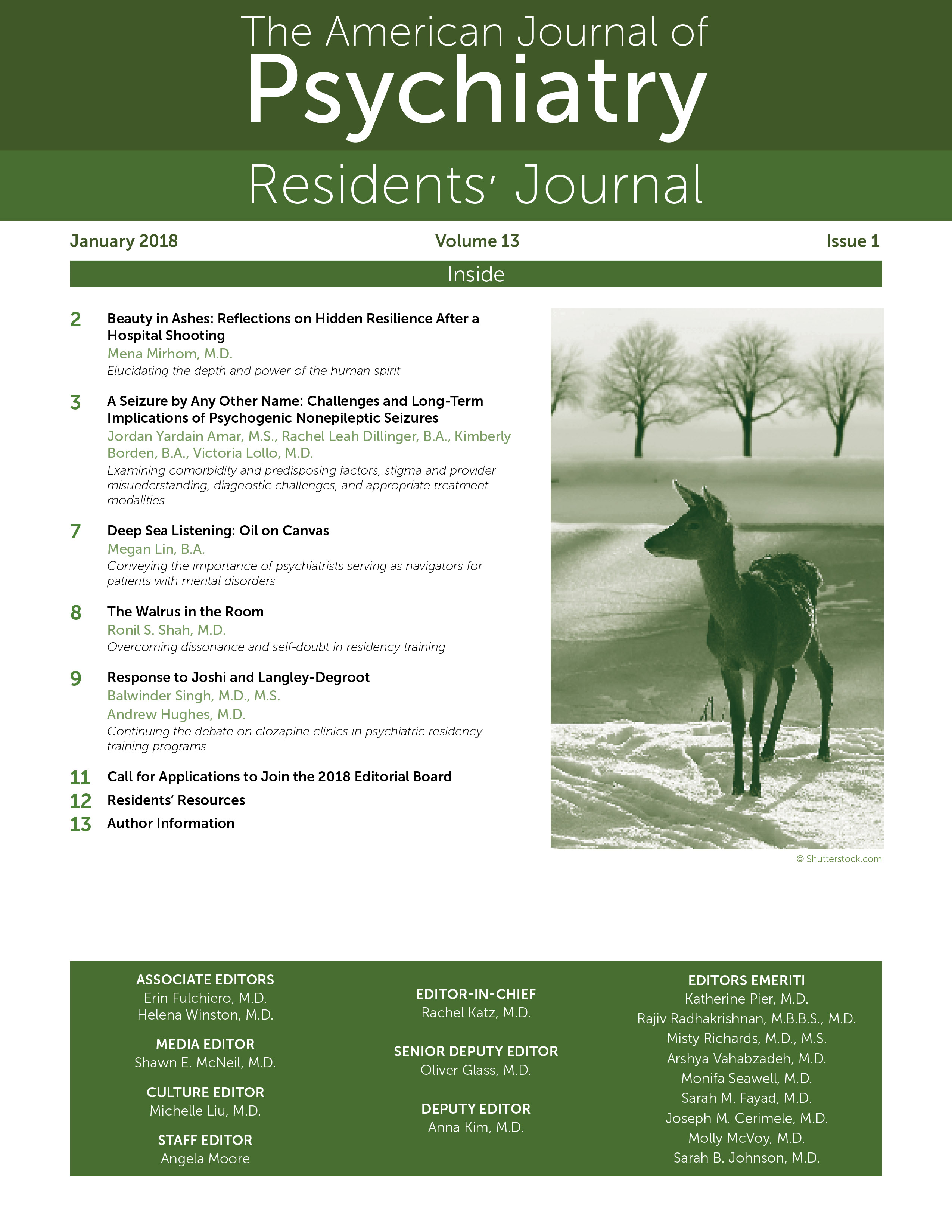Behind every exquisite thing that existed, there was something tragic.
—Oscar Wilde
Everything changed in an instant when the 16th floor of Bronx-Lebanon Hospital became a crime scene after a deadly shooting. In the days and weeks after the tragedy we endured, it was as if the air we breathed was heavy with the weight of our grief, hovering over every interaction. Casual small talk in the hallways prompted sincere reflection and a moment of pause before we answered.
In the midst of the pain, there was a hidden beauty. I was hesitant to write this because honest reflection can be almost frightening with a subject this painful. However, as we know all too well, it is often necessary and therapeutic. I needed to write these words because psychiatry does not deal with pain in storage but in process. It's in this very process that we allow ourselves to see the hidden hope and beauty in our pain.
After the tragedy, we saw one another in the truest sense—as a kind of family. In the usual hustle and bustle of our busy days, we followed routines and stayed within boundaries that we cherished. Prior to the tragedy, in our medical culture, members of every discipline had a specific place to sit, and every member of the established hierarchy stayed within well-defined lanes. After the incident, these partitions melted away. The chief resident and the housekeeper embraced to comfort one another because they felt the same pain, in different uniforms. An attending wept with a resident, and both acknowledged their vulnerability. There was an awareness that everyone began to embrace in the hospital: that we were not alone and that there is much more that unites us than divides us. We began to truly see each other. Words like "unity" and "equality" took on new meaning to us because we all realized that tragedy does not discriminate or regard titles. Suddenly, the prospect of losing everything put into perspective the value of the genuine community within our hospital.
Tragedy has a way of forcing a magnifying glass upon our character (
1), our fears, and our instincts. Over the course of these weeks, I witnessed trauma produce severe stress (
2) but also posttraumatic growth and unbelievable kindness (
3). There is a resiliency that comes with surviving such tragedy and knowing that you did so together. Now, the hallways are beginning to fill with hope. This hope is not rooted in blind optimism or denial but a sincere experience of the depth of the power of the human spirit. It is the hope of beauty seen in the midst of ashes.
Acknowledgments
The author thanks Dr. Panagiota Korenis, Residency Training Director and Vice Chair of Education and Inpatient Psychiatry at Bronx-Lebanon Hospital, for her continued mentorship and support.
